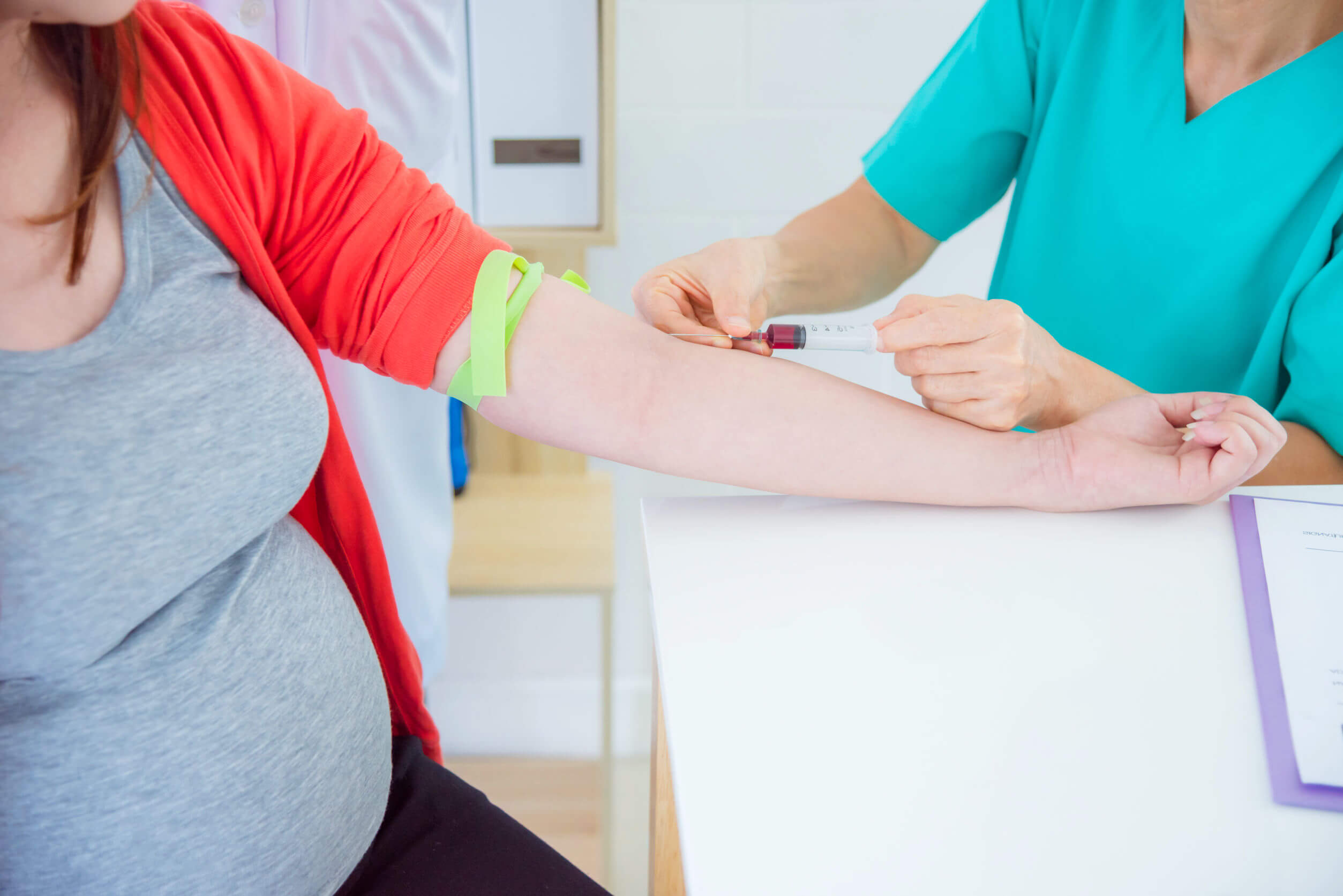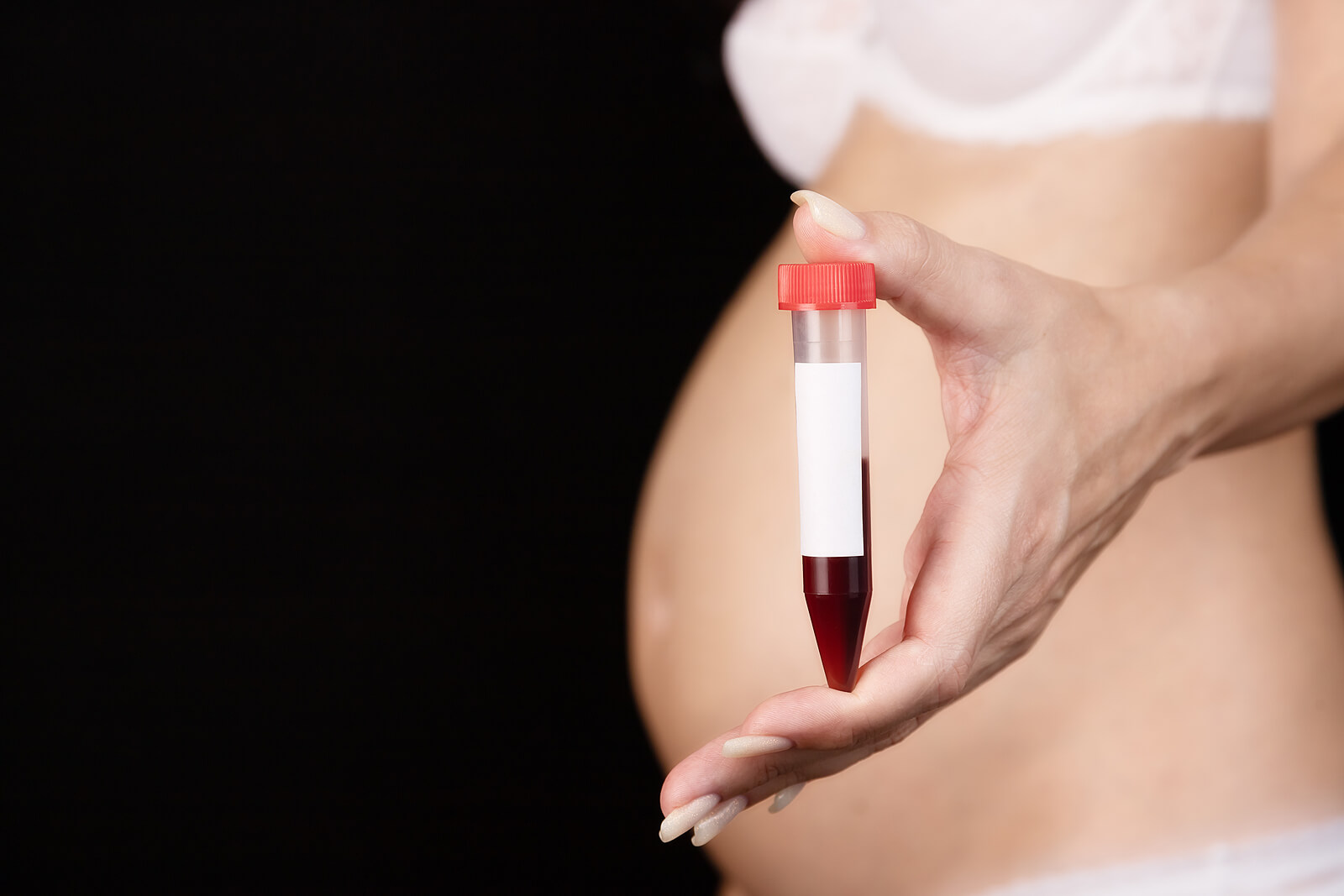The O'Sullivan Test for Detecting Gestational Diabetes


Written and verified by the nurse Leidy Mora Molina
The O’Sullivan test is a special test that’s performed in the sixth month of pregnancy to assess the mother’s blood glucose levels and ensure her and her baby’s wellbeing.
Find out what this evaluation consists of and why it’s so important to have it done.
What is the O’Sullivan test?
The O’Sullivan test is a routine analytical test that’s carried out during pregnancy. It seeks to corroborate the mother’s degree of control over her blood glucose levels. That’s to say, to know if the insulin that her body produces is enough to fulfill this function at this stage.
From its results, the doctor can determine if the mother-to-be is at risk of suffering from gestational diabetes. This complication is associated with the metabolic changes of pregnancy and if not controlled in time, it can lead to serious problems for the health of the mother and child.
In gestational diabetes, the mother’s blood concentrates a high amount of glucose. This reaches the fetus directly through the placenta and conditions several aspects of its growth and development.
Among the negative effects that this disease has on pregnancy, the following stand out:
- Polyhydramnios, or excessive amniotic fluid
- Intrauterine death
- Fetal macrosomia (excess birth weight)
- Prematurity
- Neonatal hypoglycemia (low blood glucose)
- Acute respiratory distress in the neonate
- Obesity and increased risk of future diabetes
Therefore, the importance of the O’Sullivan test lies in the fact that it makes it possible to determine in a simple and timely manner the risk of suffering from gestational diabetes.
It should be noted that it’s not a diagnostic test, but rather a screening test. That’s to say, it seeks to alert the doctor and the mother-to-be about the need to perform more specific tests to confirm or rule out this condition.

When is the O’Sullivan test performed?
The test is indicated to all pregnant women between the 24th and 28th weeks of gestation, or the sixth month of pregnancy. This is because experts have concluded that this period is the most suitable for detecting poor glycemic control.
However, in cases where it’s justified, the test can be indicated from the first trimester of pregnancy. Especially if the mother has a family history of diabetes, is older than 35 years, is overweight or had a baby weighing more than 4 kg in a previous pregnancy.
What does the procedure consist of?
To take the O’Sullivan test, you must go to the laboratory and keep in mind that you’ll be there for at least an hour.
In general, it’s not essential to fast, as sometimes the amount of glucose supplied can cause adverse symptoms when you have an empty stomach. It’s best to ask your health center about the protocol to follow for this test.
To begin with, you’ll be offered a sweet solution (with 50 g of 25% glucose diluted in 7 ounces of water) or a glucose tablet to drink.
Then, you’ll have to wait one hour for the element in question to reach your blood. During this time, you shouldn’t eat any type of food, drink, or smoke. It’s advisable that you remain seated and calm, without making any physical effort.
After that time, a blood sample will be taken to analyze your blood glucose levels in the laboratory.
How are the results of the O’Sullivan test interpreted?
As we’ve mentioned, this test is a screening test and isn’t diagnostic. This means that it aims to detect pregnant women who are at risk for diabetes or at an early or asymptomatic stage of gestational diabetes, in order to intervene before they develop complications.
Having said this, let’s consider the two possible scenarios:
- Negative test: blood glucose levels at the time of feeding are less than 140 mg/dl. This means that insulin is activated, captures glucose from the blood, and introduces it into the cells.
- Positive test: blood glucose levels at the time of intake are equal to or greater than 140 mg/dl. This means that the insulin wasn’t capable of fulfilling its function and many glucose molecules still remain in the blood.
In case of a positive O’Sullivan test result, the physician will indicate a more specific test to confirm the suspicion. This procedure is the oral glucose tolerance test (OGTT) or oral glucose overload test, which is very similar to the previous one, only with a larger intake and several blood measurements.

What does the follow-up of gestational diabetes involve?
If the OGTT is positive, then the doctor confirms the diagnosis of gestational diabetes and indicates the appropriate treatment to prevent the complications of this disease.
This usually starts with a special diet, regular exercise, and daily glycemia control before and after meals.
If with all these measures, the diabetes isn’t controlled or the initial glycemia levels are very high, the specialist will probably indicate a treatment with insulin.
The importance of screening tests during pregnancy
After reading this article, you’ll understand why the O’Sullivan Test is a convenient and necessary test. In fact, it’s the most widely used to identify the risk of gestational diabetes, as it’s quite practical, effective, and inexpensive.
In some countries, this test isn’t included in the second-trimester blood test protocol; however, depending on the maternal risk factors, the physician may indicate it anyway.
The O’Sullivan test is a special test that’s performed in the sixth month of pregnancy to assess the mother’s blood glucose levels and ensure her and her baby’s wellbeing.
Find out what this evaluation consists of and why it’s so important to have it done.
What is the O’Sullivan test?
The O’Sullivan test is a routine analytical test that’s carried out during pregnancy. It seeks to corroborate the mother’s degree of control over her blood glucose levels. That’s to say, to know if the insulin that her body produces is enough to fulfill this function at this stage.
From its results, the doctor can determine if the mother-to-be is at risk of suffering from gestational diabetes. This complication is associated with the metabolic changes of pregnancy and if not controlled in time, it can lead to serious problems for the health of the mother and child.
In gestational diabetes, the mother’s blood concentrates a high amount of glucose. This reaches the fetus directly through the placenta and conditions several aspects of its growth and development.
Among the negative effects that this disease has on pregnancy, the following stand out:
- Polyhydramnios, or excessive amniotic fluid
- Intrauterine death
- Fetal macrosomia (excess birth weight)
- Prematurity
- Neonatal hypoglycemia (low blood glucose)
- Acute respiratory distress in the neonate
- Obesity and increased risk of future diabetes
Therefore, the importance of the O’Sullivan test lies in the fact that it makes it possible to determine in a simple and timely manner the risk of suffering from gestational diabetes.
It should be noted that it’s not a diagnostic test, but rather a screening test. That’s to say, it seeks to alert the doctor and the mother-to-be about the need to perform more specific tests to confirm or rule out this condition.

When is the O’Sullivan test performed?
The test is indicated to all pregnant women between the 24th and 28th weeks of gestation, or the sixth month of pregnancy. This is because experts have concluded that this period is the most suitable for detecting poor glycemic control.
However, in cases where it’s justified, the test can be indicated from the first trimester of pregnancy. Especially if the mother has a family history of diabetes, is older than 35 years, is overweight or had a baby weighing more than 4 kg in a previous pregnancy.
What does the procedure consist of?
To take the O’Sullivan test, you must go to the laboratory and keep in mind that you’ll be there for at least an hour.
In general, it’s not essential to fast, as sometimes the amount of glucose supplied can cause adverse symptoms when you have an empty stomach. It’s best to ask your health center about the protocol to follow for this test.
To begin with, you’ll be offered a sweet solution (with 50 g of 25% glucose diluted in 7 ounces of water) or a glucose tablet to drink.
Then, you’ll have to wait one hour for the element in question to reach your blood. During this time, you shouldn’t eat any type of food, drink, or smoke. It’s advisable that you remain seated and calm, without making any physical effort.
After that time, a blood sample will be taken to analyze your blood glucose levels in the laboratory.
How are the results of the O’Sullivan test interpreted?
As we’ve mentioned, this test is a screening test and isn’t diagnostic. This means that it aims to detect pregnant women who are at risk for diabetes or at an early or asymptomatic stage of gestational diabetes, in order to intervene before they develop complications.
Having said this, let’s consider the two possible scenarios:
- Negative test: blood glucose levels at the time of feeding are less than 140 mg/dl. This means that insulin is activated, captures glucose from the blood, and introduces it into the cells.
- Positive test: blood glucose levels at the time of intake are equal to or greater than 140 mg/dl. This means that the insulin wasn’t capable of fulfilling its function and many glucose molecules still remain in the blood.
In case of a positive O’Sullivan test result, the physician will indicate a more specific test to confirm the suspicion. This procedure is the oral glucose tolerance test (OGTT) or oral glucose overload test, which is very similar to the previous one, only with a larger intake and several blood measurements.

What does the follow-up of gestational diabetes involve?
If the OGTT is positive, then the doctor confirms the diagnosis of gestational diabetes and indicates the appropriate treatment to prevent the complications of this disease.
This usually starts with a special diet, regular exercise, and daily glycemia control before and after meals.
If with all these measures, the diabetes isn’t controlled or the initial glycemia levels are very high, the specialist will probably indicate a treatment with insulin.
The importance of screening tests during pregnancy
After reading this article, you’ll understand why the O’Sullivan Test is a convenient and necessary test. In fact, it’s the most widely used to identify the risk of gestational diabetes, as it’s quite practical, effective, and inexpensive.
In some countries, this test isn’t included in the second-trimester blood test protocol; however, depending on the maternal risk factors, the physician may indicate it anyway.
All cited sources were thoroughly reviewed by our team to ensure their quality, reliability, currency, and validity. The bibliography of this article was considered reliable and of academic or scientific accuracy.
- Centros para el control y prevención de enfermedades de EEUU (CDC). (2017). La diabetes gestacional. Recuperado de: https://www.cdc.gov/diabetes/spanish/basics/gestational.html
- Rojas, S. et al (2013). Precisión diagnóstica de la prueba de O’Sullivan en diabetes gestacional. Revista médica del Instituto Mexicano del Seguro Social. Vol. 51. Nº 3. Pp. 336-339
- Perches, N. Et al. (2021). Diabetes gestacional: la importancia del test de O’Sullivan y SOG. Revista Ocronos. Vol. IV. Nº 12. Recuperado de: https://revistamedica.com/diabetes-gestacional-test-osullivan-sog/
This text is provided for informational purposes only and does not replace consultation with a professional. If in doubt, consult your specialist.








